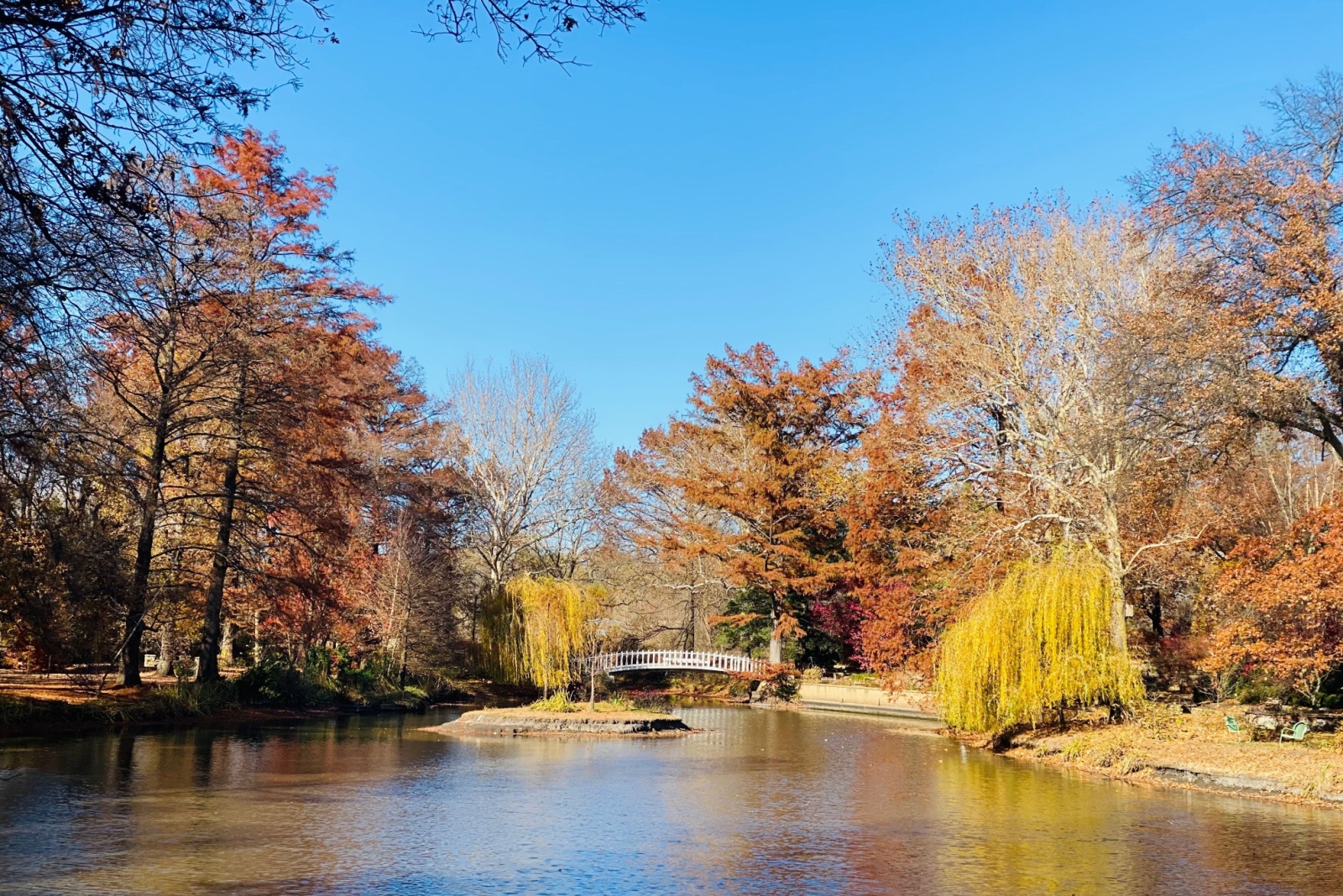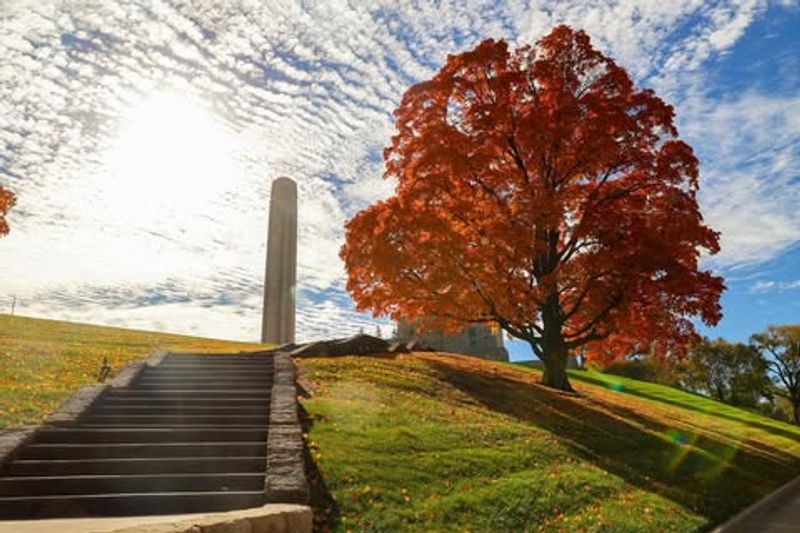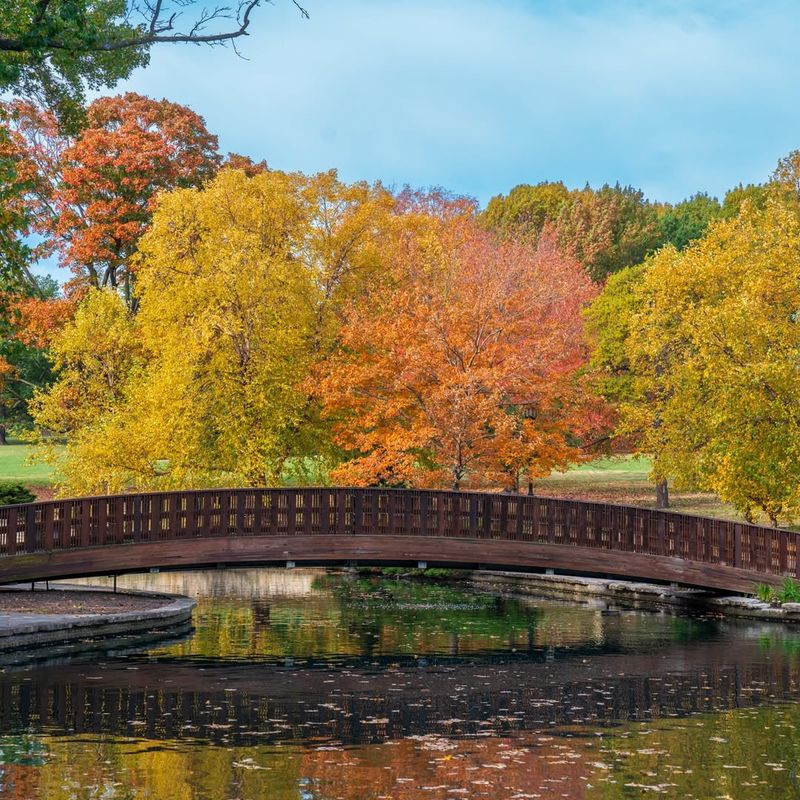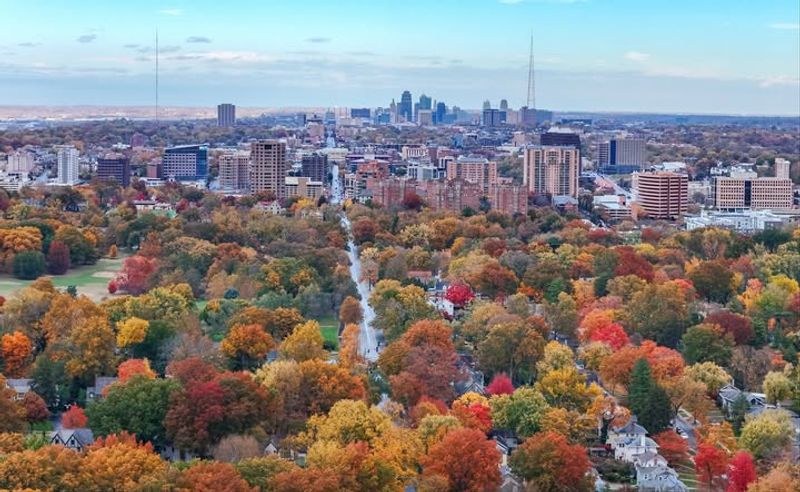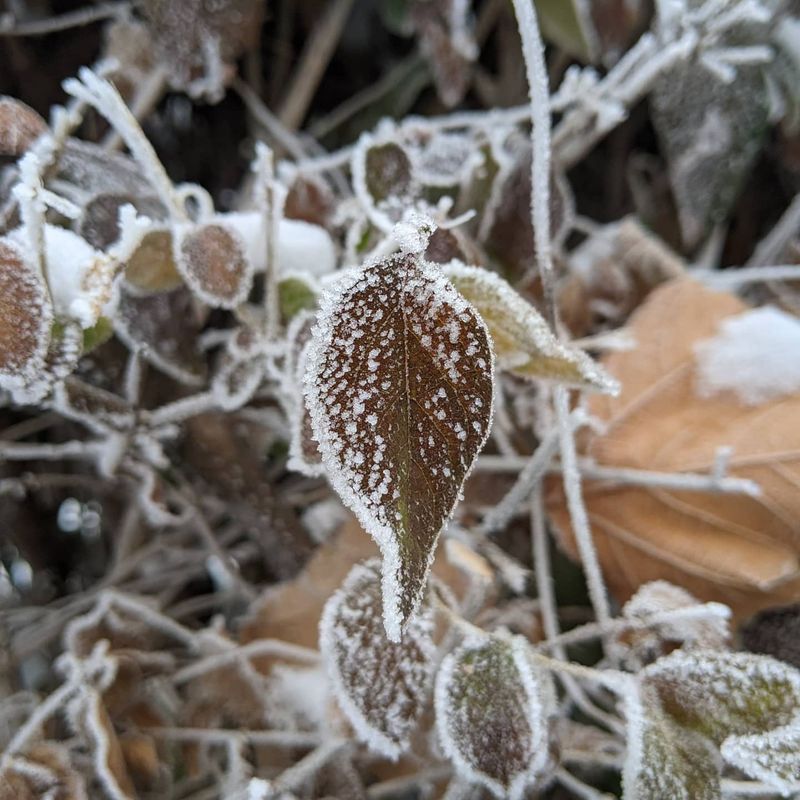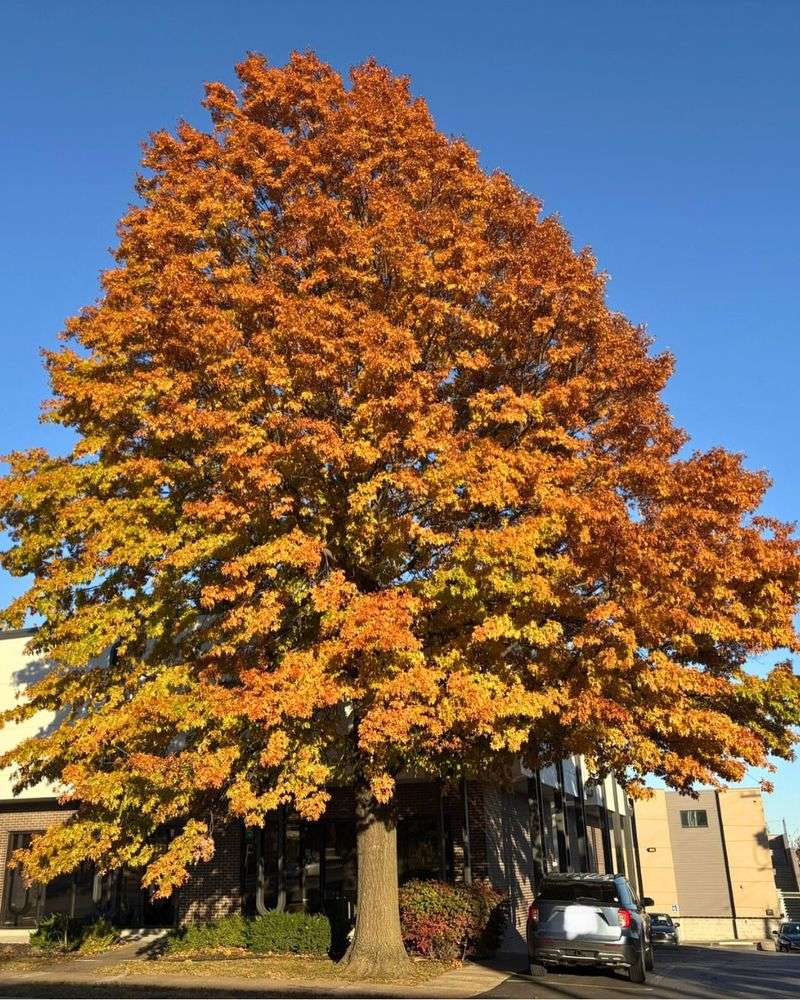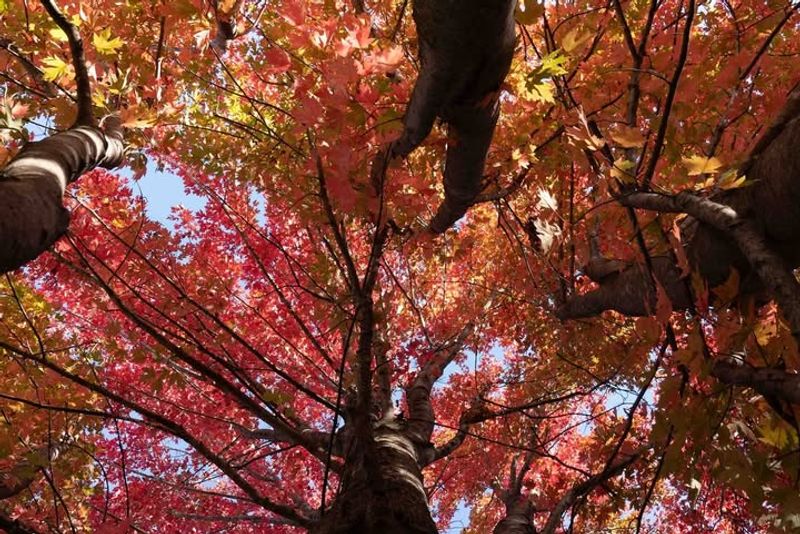Kansas trees are running behind schedule this Thanksgiving, hanging onto their leaves long after they’d normally carpet the ground.
Warm fall days, late-arriving cold snaps, and stubborn stretches of mild weather have thrown nature’s calendar for a loop, leaving branches fuller and colors lingering well into the holiday season.
This unusual timing isn’t just eye-catching, it reveals a lot about the shifting rhythm of Kansas autumns and what homeowners can expect in the years ahead.
Warmer Fall Temperatures Confusing Tree Biology
Kansas experienced unusually warm weather throughout October and November, which threw off the natural timing trees rely on. Trees depend on cooler temperatures as a signal to start shutting down for winter.
When temperatures stay mild, trees don’t get that important message. Their internal clocks get confused, and they keep producing chlorophyll longer than normal.
This means leaves stay green and attached to branches well past their usual drop date, creating a delayed autumn display across the state.
Extended Growing Season Due To Climate Patterns
Climate shifts have lengthened Kansas’s growing season by several weeks compared to past decades. Trees are programmed to make the most of favorable conditions for photosynthesis and growth.
With frost arriving later and warmer days stretching into November, trees continue their normal summer activities. They’re essentially working overtime, soaking up sunshine and making food through their leaves.
Only when harsh weather finally arrives do they realize it’s time to drop leaves and rest, causing the delayed leaf fall we’re witnessing this Thanksgiving.
Adequate Rainfall Keeping Trees Hydrated And Active
Unlike drought years when trees drop leaves early to conserve water, Kansas received decent rainfall this fall. Well-hydrated trees stay healthier and more active later into the season.
Moisture allows trees to maintain their leaves because they don’t face the stress that triggers early leaf drop. Healthy, watered trees can afford to keep their foliage functioning longer.
This combination of good water supply and mild temperatures creates perfect conditions for extended leaf retention, pushing the autumn color show past Thanksgiving this year in many Kansas communities.
Delayed Frost Dates Across The State
Frost acts like nature’s alarm clock, telling trees winter is coming. Kansas typically sees its first hard frost in mid-October, but this year it arrived much later in many areas.
Without that freezing wake-up call, trees continue business as usual. The chemical changes that cause leaves to separate from branches simply don’t start on schedule.
Some Kansas regions didn’t experience frost until early November, giving trees weeks of extra time to hold their leaves and delaying the bare-branch look we associate with Thanksgiving.
Tree Species Variations In Leaf Drop Timing
Different tree species respond to environmental cues in their own unique ways. Oaks, for instance, naturally hold their leaves longer than maples or elms, even in normal years.
Kansas has a diverse mix of tree species, and some are more sensitive to temperature changes than others. When conditions stay mild, late-dropping species really take advantage of the extra time.
This year’s unusual weather amplified these natural differences, making species like bur oak and sycamore especially noticeable as they retain colorful leaves while neighbors have already gone bare.
Soil Temperature Remaining Above Normal
People often forget that what happens underground matters just as much as air temperature. Kansas soil temperatures stayed warmer than usual this fall, affecting root activity and tree behavior.
Warm soil keeps roots active and sending nutrients upward through the tree. Active roots mean active trees, which aren’t ready to enter dormancy.
As long as roots keep pumping water and minerals to branches, trees maintain their leaves. Only when the ground cools significantly do trees get the full signal that winter demands rest and leaf drop.
Reduced Stress From Pests And Disease This Year
Stressed trees often drop leaves early as a survival strategy. This year, Kansas trees experienced fewer pest outbreaks and disease problems than in previous seasons.
Healthy trees without the burden of fighting insects or infections can maintain their leaves longer into autumn. They have more energy reserves to keep foliage attached and functioning.
When trees aren’t battling emerald ash borers, bagworms, or fungal infections, they follow a more natural, leisurely schedule for leaf drop, contributing to the later-than-usual autumn display Kansas residents are enjoying this Thanksgiving.

